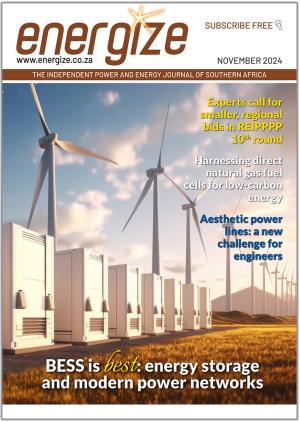Despite strides towards eliminating challenges inhibiting more wind energy installations in Africa, there is ground to cover, says the South African Wind Energy Association (SAWEA), commenting on the recently published Global Wind Report 2024.
Published by the Global Wind Energy Council (GWEC), the report lacks substantial African statistics.
“While there are positive signals in the adoption of wind energy, several challenges persist, including volatile energy policies, permitting complexities, grid bottlenecks and land rights issues, which create uncertainty for the wind energy market,” says SAWEA Communication Officer, Morongoa Ramaboa. “Addressing these challenges requires clear and supportive policies.”
Citing the latest edition of The Status of Wind in Africa by GWEC, SAWEA states that Africa currently has installed renewable energy (RE) capacity of 9 GW, which has consistently increased since 2000. “Annual installations of 800 MW or more were recorded in 2018, 2020, 2021 and 2022,” says Ramaboa. “The report identifies and maps 140 planned projects across Africa, representing 86 GW of planned new wind capacity.”
South Africa leads with 30% of installed RE capacity. Wind power alleviates one to two stages of load shedding during peak periods by currently contributing 2 GW to the grid. However, a significant challenge for South Africa is grid bottlenecks, which limit the connection of new wind projects. “This issue can be mitigated through immediate investment, training new technicians and involving the
private sector in accelerating expansion of the transmission network,” Ramaboa says. The Eskom-led interactive South African Renewable Energy Grid Survey – a collaboration between SAWEA and the South African Photovoltaic Industry Association – tracks the development pipeline of RE projects. “The map notes 64 GW of RE projects in various stages of development with wind energy projects accounting for 50% of the total,” Ramaboa says. “The results provide insights into the locations and formats of these projects.”
Grid access is a global challenge. South Africa could learn from countries like Germany where the regulatory framework enables operators to recover the costs of renewables integration, Ramaboa says.
Kenya is highlighted in a case study in the ‘Global Wind Report 2024’. As of June 2023, wind energy accounts for over 12% of installed power generation capacity, on the grid and for captive use, in Kenya. Wind power contributes around 17% to Kenya’s total power supply, which is a 7% increase from the previous year. Wind energy is the third most significant source of power behind geothermal and hydropower in Kenya. The Lake Turkana project, with capacity of 310 MW, is the largest power plant of any technology on the grid. It is also the biggest wind farm in Africa, providing nearly 13% of Kenya’s electricity















